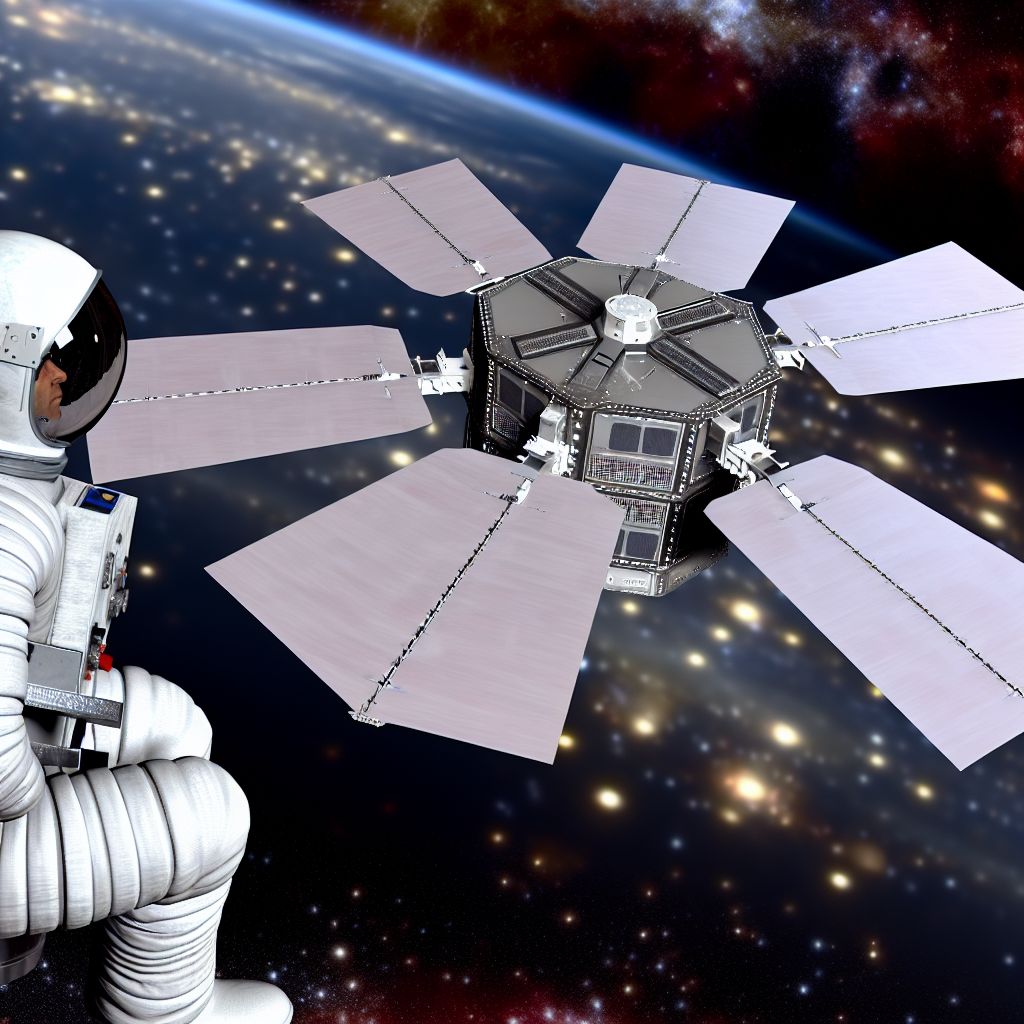In the Space industry context, endurance refers to the ability of spacecraft, satellites, or any space-related technology and systems to operate over extended periods under the harsh conditions of space. This includes resistance to extreme temperatures, radiation, Micrometeoroid impacts, and the Vacuum of space. Endurance is a Critical factor in the design, testing, and operation of space missions, determining the lifespan and reliability of space assets.
Description

Endurance in the space industry encompasses several key aspects:
- Structural Integrity: The capability of a spacecraft's structure to withstand the stresses of Launch, deployment, and the space environment without significant degradation.
- System Reliability: The durability of onboard systems and components, including Power systems, Propulsion, Communication systems, and scientific instruments, to function as intended over the mission duration.
- Thermal Control: The ability to maintain operational temperatures for all critical components despite the extreme cold and Heat of space.
- Radiation Shielding: Protection against space radiation, including solar flares and cosmic rays, which can damage electronics and pose risks to Astronaut health.
Application Areas
- Long-Duration Manned Missions: Such as those to the International Space Station (ISS), lunar bases, or future missions to Mars, where life Support systems must operate reliably for months or years.
- Deep Space Probes: Unmanned spacecraft sent to study other planets, asteroids, and comets, often operating for many years far from Earth.
- Satellite Constellations: Networks of satellites providing global communication, navigation, or Earth observation services that require high reliability over extended periods.
- Rover Missions: Surface Exploration vehicles on the Moon, Mars, and other Celestial bodies that must endure extreme environmental conditions.
Risks
- Component Failure: Long-term Exposure to space conditions can lead to the failure of critical components, potentially ending a mission prematurely.
- Software Degradation: The risk of software errors or malfunctions increasing over time, affecting mission operations and Data integrity.
- Resource Depletion: For missions relying on consumable resources, such as Fuel or Coolant, endurance is limited by the availability of these resources.
Examples
- Voyager Probes: Launched in the 1970s, these probes have far exceeded their original mission lifespans, continuing to transmit data from beyond our solar system.
- Hubble Space Telescope: Operating since 1990, Hubble has provided invaluable Astronomical data, thanks to multiple servicing missions that have extended its operational life.
- Mars Rovers Opportunity and Curiosity: These rovers have exceeded their planned mission durations, exploring the Martian surface for years and providing extensive scientific data.
Similar Terms or Synonyms
- Durability
- Lifespan
- Mission Longevity
Weblinks
- fitness-and-health-glossary.com: 'Endurance' in the fitness-and-health-glossary.com
- quality-database.eu: 'Endurance' in the glossary of the quality-database.eu
- quality-database.eu: 'Endurance' in the glossary of the quality-database.eu
- psychology-lexicon.com: 'Endurance' in the psychology-lexicon.com
Articles with 'Endurance' in the title
- Long-endurance: Long-endurance in the space industry context refers to the capability of spacecraft, satellites, or space missions to operate effectively over extended periods, often significantly beyond their initial expected service life
Summary
Endurance in the space industry is a measure of how long space missions and technologies can effectively operate in the challenging conditions of space. It is a critical consideration in the design, testing, and deployment of spacecraft and satellites, affecting mission success and the return on investment in space technology. Achieving high endurance requires careful Engineering, rigorous testing, and sometimes innovative solutions to extend the operational life of space assets.
--
Related Articles to the term 'Endurance' | |
| 'Material Resistance' | ■■■■■■■■■■ |
| Material Resistance: Material resistance in the space industry context refers to the ability of materials . . . Read More | |
| 'Environmental Resistance' | ■■■■■■■■■■ |
| Environmental Resistance: Environmental resistance in the space industry refers to the capacity of spacecraft, . . . Read More | |
| 'Robust Design' | ■■■■■■■■■ |
| Robust Design in the space industry context refers to the approach of creating spacecraft, satellites, . . . Read More | |
| 'Structural Integrity' | ■■■■■■■■ |
| Structural Integrity in the space industry context refers to the strength and durability of spacecraft, . . . Read More | |
| 'Harsh Space Environment' | ■■■■■■■ |
| Harsh Space Environment in the space industry context refers to the extreme and unforgiving conditions . . . Read More | |
| 'Testing' | ■■■■■■■ |
| Testing in the space industry context refers to the comprehensive and systematic processes conducted . . . Read More | |
| 'Degradation' | ■■■■■■■ |
| Degradation in the space industry refers to the gradual decline in the Performance or functionality of . . . Read More | |
| 'Coating' | ■■■■■■■ |
| Coating in the space industry context refers to the application of thin layers of material on surfaces . . . Read More | |
| 'Mechanical Stress' | ■■■■■■■ |
| Mechanical Stress in the space industry refers to the internal forces that materials and structures Experience . . . Read More | |
| 'Reactivity' | ■■■■■■ |
| Reactivity in the space industry refers to the ability of systems, organisations, or missions to respond . . . Read More | |
